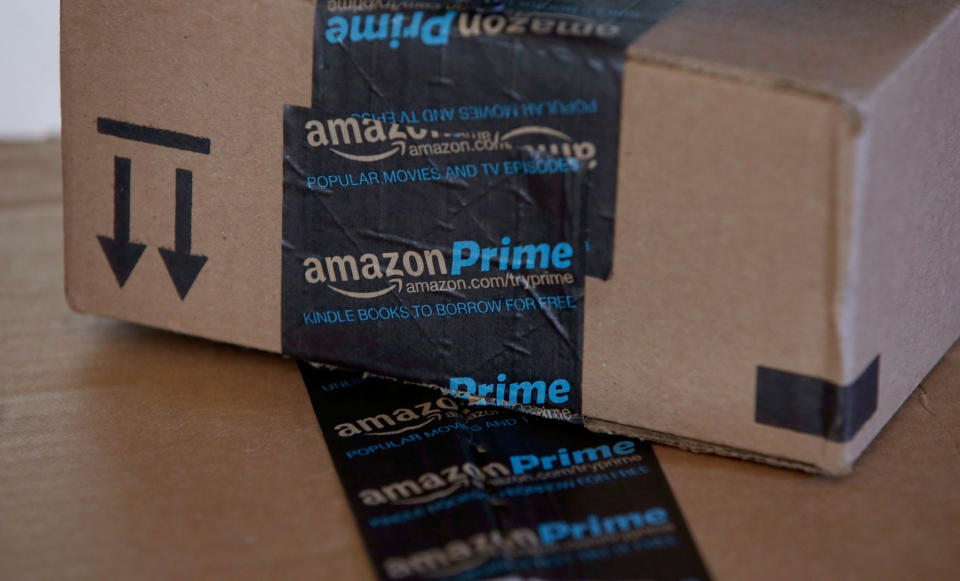Almost half of Amazon Prime members we surveyed say they'll drop the service, but the company will be fine
Merry Gangemi, who has been an Amazon Prime user since 2014, plans to drop her membership because Amazon is raising the annual membership fee to $119 from $99.
“I feel like I’m paying more for the same or less,” the retiree in Vermont told Yahoo Finance. Gangemi buys books and watches TV series on Amazon, but it bothers her when she needs to pay extra for certain programs, not to mention Amazon delivery service isn’t great in the rural area where she lives.
Amazon Prime’s price hike comes after blockbuster first-quarter earnings results, which sent the stock (AMZN) soaring to record highs. The increase will take effect for new users in May and apply to existing members in June. For the lucky subscribers whose membership expires in May, they can still enjoy the old $99 price for one final year.
While Wall Street sees the move as a positive, the $20 increase has become a deal breaker for many current Prime members who are now rethinking renewals. According to a recent Yahoo Finance survey, among almost 7,000 current Prime members, 45% said they will discontinue their membership once the price goes up to $119 a year. Twenty percent were unsure. For those who are willing to pay more, the vast majority cite “fast and free delivery” as the top reason for staying. A recent poll from DealNews, a comparison shopping website, revealed similar results: Almost half of Prime users surveyed said they won’t pay the new price.
Respondents to the Yahoo Finance survey said they just don’t shop enough on Amazon or they don’t use perks like Prime video often enough to justify the higher upfront cost. Some even said they would turn to other retailers like Walmart (WMT) to find competitive prices and services after dropping Prime.
Easier said than done

But the actual membership dropout rate could be much lower than the initial survey results show, according to Lindsay Sakraida, director of content marketing at DealNews. She said emotions and psychology come into play in people’s responses. Amazon’s Prime membership price increase came one week after the e-commerce giant announced they have 100 million Prime members globally. The company’s first quarter 2018 earnings also beat analysts’ expectations, sending Amazon stock soaring to nearly $1,600 per share.
“Some feel it’s greedy for Amazon to increase the price. There is a perception that they’re doing very well and they don’t need to do that to take advantage of people,” said Sakraida.
Crossing the $100 threshold also pushes people to re-evaluate their expenses. For some people, they may adjust and opt for a monthly Prime membership, which was also increased to $12.99 from $10.99 earlier this year. Sakraida said people may take a closer look at the monthly option especially during major shopping holidays like Black Friday and Prime Day. “If they quit, they can always subscribe again for a shorter period of time if they need it,” she said.
Wall Street isn’t worried

Analysts are bullish on the Amazon Prime price jump. In a note last week, Goldman Sachs said the price increase could add $1.5 billion of incremental gross profit in 2019 and help Amazon offset potential higher shipping costs from USPS.
“The strength and stickiness of these businesses (high consumer value proposition) enable Amazon to continue investing to deepen its competitive moat and expanding its addressable market,” analysts wrote in the note.
While Neil Saunders, managing director at GlobalData, expects some people to drop Prime, he believes it’s unlikely that Amazon’s overall Prime subscriber base will decline. “The increase in fees will boost Amazon’s overall revenue from Prime subscriptions. This will be immediately beneficial to both the top and bottom lines,” he told Yahoo Finance.
It’s common for subscription service providers to use a lower price to get customers to sign up and then gradually raise the cost. Even at $119, Saunders said the higher price doesn’t cover all the benefits consumers get from a Prime membership. “There is definitely future scope for further membership-fee increases,” he said.
Krystal Hu covers technology and economy for Yahoo Finance. Follow her on Twitter
Read more:
Small businesses will be the losers in the Supreme Court’s online sales tax case
